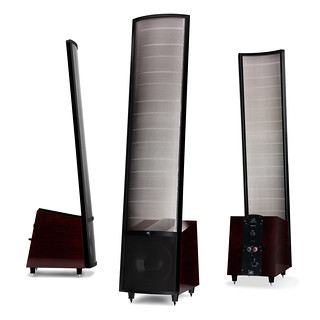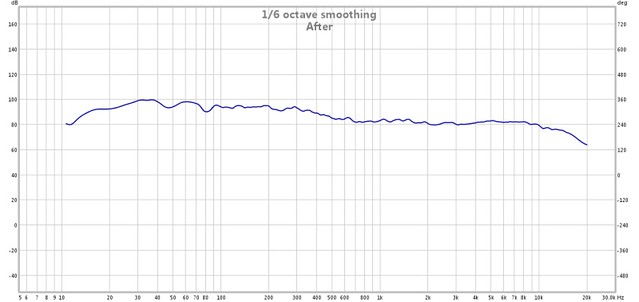Wow those Montis look so much like my summits .. The summits cross over at 270.
Here's a snippet about the low end ...
Controlled Dispersion PoweredForce Bass
MartinLogan PoweredForce woofers feature advanced driver and amplification technologies that deliver astonishingly dynamic and articulate bass to as low as 24Hz from an enclosure only about the size of a case of wine. Controlled Dispersion PoweredForce woofers tailor output to provide a dispersion pattern at the crossover point mimicking that of our controlled dispersion electrostatic transducers. This breakthrough design provides dynamic, room filling bass at the lowest frequencies. However, by smoothly shifting woofer phasing as it approaches the crossover point we create a hybrid speaker that operates much more like a full range dipole (down to 160Hz) and brings with it all the requisite advantages of a controlled dispersion radiation pattern and uniform wave launch while still retaining the efficiency and dynamics that cone woofers provide at the lowest frequencies. By operating in dipole below the crossover point, the cones match the electrostatic panel when projecting sound into the room to provide controlled dispersion that minimizes side-wall reflections and reduces problematic room interactions in the midbass and midrange frequencies.
At the lowest bass frequencies (below 100Hz), the woofers remain in phase which is ideal for eliminating low frequency cancelation inherent to full range dipoles. This provides deep, dynamic low bass superior to that of most expensive high-end loudspeakers. Summit X is truly the finest hybrid speaker in the world, bringing all the benefits of both dynamic and electrostatic transducers into one seamless, easy to set up, and conveniently sized package. Additional 25 and 50Hz low-frequency equalization level controls further enhance performance by allowing precise tailoring to accommodate individual room acoustics.
The following graphs are idealized representations of the Summit X's bass response. Note on the graph titled 'Response: Behind Speaker', that the bass response at the lowest frequencies is in phase with the front response (indicated by the grey background). Between 100Hz and 160Hz woofer output shifts to become completely 180 degrees out of phase with the front response. In reality, this phase shifting is much more gradual than shown in the graph. It is simplified here to illustrate the concept. When the front and rear bass responses (sound waves) meet in the middle (at the sides of the speaker), the opposing phases cancel each other and cause the response to drop off as shown in the graph titled 'Response: Speaker Side'. Focusing wave launch above 160Hz to the front and back of the speaker effectively mimics the controlled dispersion pattern inherent to our electrostatic transducers. This allows the output of the dynamic woofer and electrostatic transducers to operate with a cohesive, aligned wave launch creating a seamless sonic presentation across the full range of sound while minimizing side wall reflections that muddle sonic detail and stereo imaging.



